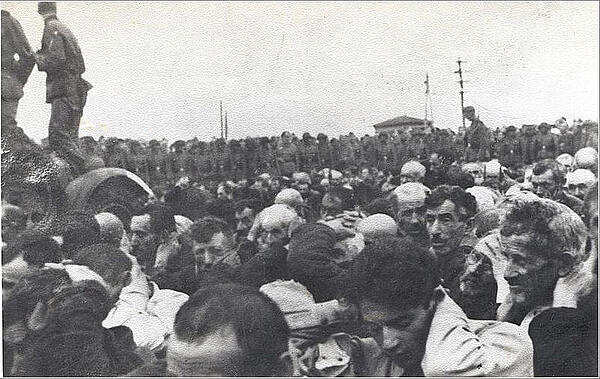The Bialystok Ghetto
Many ghettos were created by the Nazis across Poland following their invasion of the country in 1939. Although not as big as many of the main ghettos, the Bialystok Ghetto remains one of the most notorious.
The Bialystok Ghetto was used to house all the Jews in city and surrounding areas while they awaited deportation to death camps or were put to work in workshops. Jews were subjected to appalling conditions in the ghetto, living in small spaces with little food.
Bialystok was smaller than the best known ghettos of Lodz and Warsaw but it conformed to the same strict rules and regulations. For example, the Jews that were rounded up and forced to live there were then forbidden to communicate with the outside world. They were also not allowed to conduct any form of trade with any individual or business outside of the ghetto while the Nazis controlled things like food and medical supplies, often meaning the Jews got little of either.

The population of the Bialystok Ghetto tended to remain at around 15,000 during the six years it was open. However, as many Jews died or were deported to the death camps others would come from the surrounding areas to take their place so, in total, estimates that roughly 60,000 Jews passed through the ghetto.
Not on the same scale as the 1943 Warsaw Uprising, the Bialystok Ghetto saw its own insurrection as the Jews fought back against the Nazis. On 15 August 1943, as the Nazis prepared to start the process of tearing down the ghetto, as they had planned to do, several hundred Jews rose up; the prisoners attacked Nazis using pistols, Molotov cocktails and a single machine gun, which they had managed to smuggle into the ghetto. However, the Jews soon ran out of ammo and the uprising was quashed.
Few people from the Bialystok Ghetto survived, with the majority sent to the death camps. The in the ghetto - of which there were around 1,200 - were originally going to be put to work in a concentration camp but later the decision was taken to deport them to Auschwitz instead, where they were killed.
As with many of the ghettos and death camps, the Nazis did their best to destroy the remains of them when it became clear that they were going to lose the war. Indeed, in 1945 when the Red Army freed Bialystok the ghetto had been largely destroyed and most of the Jews who had been forced to live there had already been sent to their deaths at various camps across Poland.
See also: Jewish Revenge Squads
MLA Citation/Reference
"The Bialystok Ghetto". HistoryLearning.com. 2025. Web.
